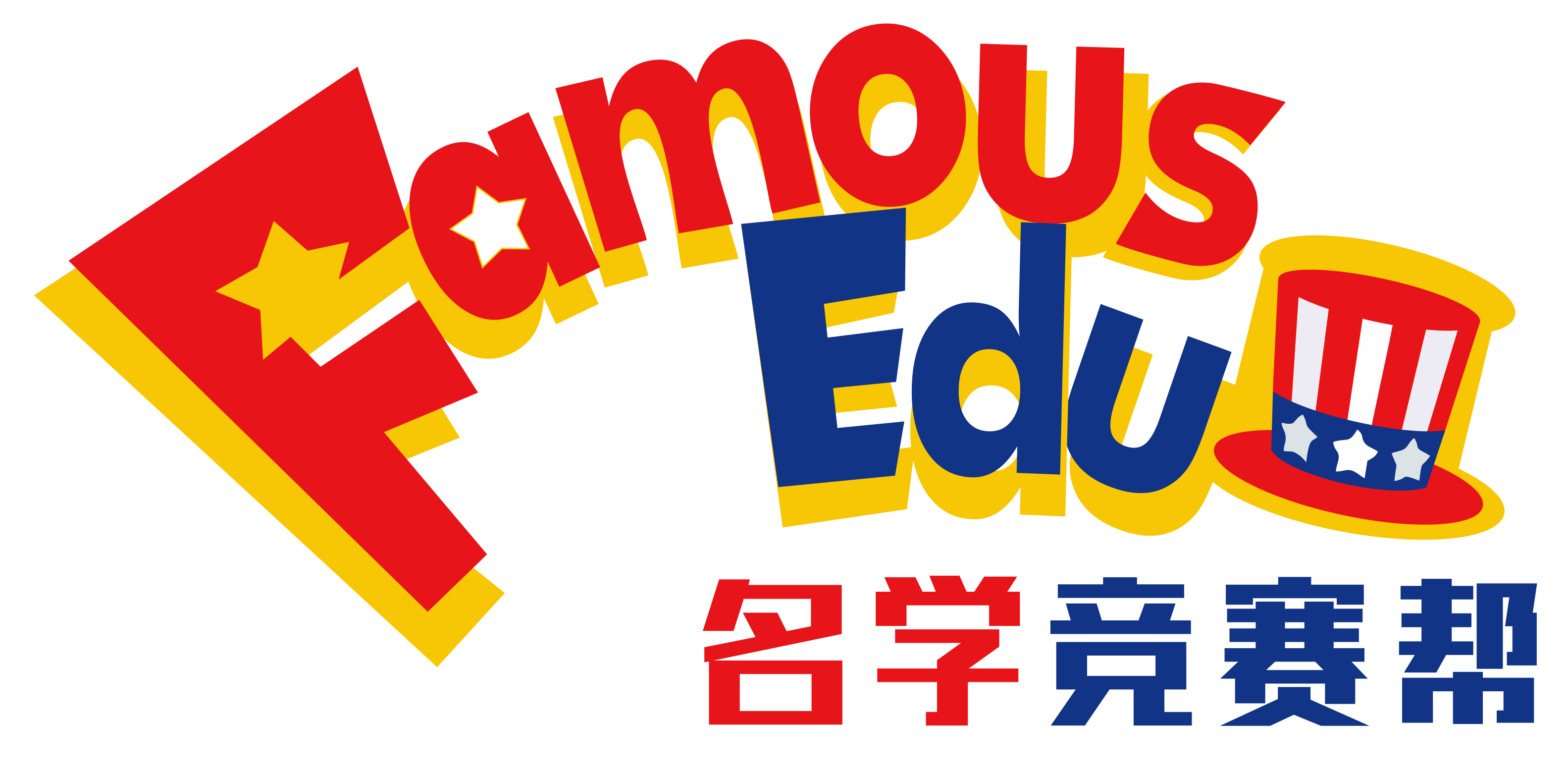AMC8 2010年真题
2010 AMC 8 Problems
Problem 1
At Euclid Middle School the mathematics teachers are Miss Germain, Mr. Newton, and Mrs. Young. There are 11 students in Mrs. Germain's class, 8 students in Mr. Newton's class, and 9 students in Mrs. Young's class taking the AMC 8 this year. How many mathematics students at Euclid Middle School are taking the contest?
(A) 26 (B) 27 (C) 28 (D) 29 (E) 30
![]() Problem 2
Problem 2
If for a, b positive integers, then what is 5@10 ?
![]()
Problem 3
The graph shows the price of five gallons of gasoline during the first ten months of the year. By what percent is the highest price more than the lowest price?
![[asy] import graph; size(16.38cm); real lsf=2; pathpen=linewidth(0.7); pointpen=black; pen fp = fontsize(10); pointfontpen=fp; real xmin=-1.33,xmax=11.05,ymin=-9.01,ymax=-0.44; pen ycycyc=rgb(0.55,0.55,0.55); pair A=(1,-6), B=(1,-2), D=(1,-5.8), E=(1,-5.6), F=(1,-5.4), G=(1,-5.2), H=(1,-5), J=(1,-4.8), K=(1,-4.6), L=(1,-4.4), M=(1,-4.2), N=(1,-4), P=(1,-3.8), Q=(1,-3.6), R=(1,-3.4), S=(1,-3.2), T=(1,-3), U=(1,-2.8), V=(1,-2.6), W=(1,-2.4), Z=(1,-2.2), E_1=(1.4,-2.6), F_1=(1.8,-2.6), O_1=(14,-6), P_1=(14,-5), Q_1=(14,-4), R_1=(14,-3), S_1=(14,-2), C_1=(1.4,-6), D_1=(1.8,-6), G_1=(2.4,-6), H_1=(2.8,-6), I_1=(3.4,-6), J_1=(3.8,-6), K_1=(4.4,-6), L_1=(4.8,-6), M_1=(5.4,-6), N_1=(5.8,-6), T_1=(6.4,-6), U_1=(6.8,-6), V_1=(7.4,-6), W_1=(7.8,-6), Z_1=(8.4,-6), A_2=(8.8,-6), B_2=(9.4,-6), C_2=(9.8,-6), D_2=(10.4,-6), E_2=(10.8,-6), L_2=(2.4,-3.2), M_2=(2.8,-3.2), N_2=(3.4,-4), O_2=(3.8,-4), P_2=(4.4,-3.6), Q_2=(4.8,-3.6), R_2=(5.4,-3.6), S_2=(5.8,-3.6), T_2=(6.4,-3.4), U_2=(6.8,-3.4), V_2=(7.4,-3.8), W_2=(7.8,-3.8), Z_2=(8.4,-2.8), A_3=(8.8,-2.8), B_3=(9.4,-3.2), C_3=(9.8,-3.2), D_3=(10.4,-3.8), E_3=(10.8,-3.8); filldraw(C_1--E_1--F_1--D_1--cycle,ycycyc); filldraw(G_1--L_2--M_2--H_1--cycle,ycycyc); filldraw(I_1--N_2--O_2--J_1--cycle,ycycyc); filldraw(K_1--P_2--Q_2--L_1--cycle,ycycyc); filldraw(M_1--R_2--S_2--N_1--cycle,ycycyc); filldraw(T_1--T_2--U_2--U_1--cycle,ycycyc); filldraw(V_1--V_2--W_2--W_1--cycle,ycycyc); filldraw(Z_1--Z_2--A_3--A_2--cycle,ycycyc); filldraw(B_2--B_3--C_3--C_2--cycle,ycycyc); filldraw(D_2--D_3--E_3--E_2--cycle,ycycyc); D(B--A,linewidth(0.4)); D(H--(8,-5),linewidth(0.4)); D(N--(8,-4),linewidth(0.4)); D(T--(8,-3),linewidth(0.4)); D(B--(8,-2),linewidth(0.4)); D(B--S_1); D(T--R_1); D(N--Q_1); D(H--P_1); D(A--O_1); D(C_1--E_1); D(E_1--F_1); D(F_1--D_1); D(D_1--C_1); D(G_1--L_2); D(L_2--M_2); D(M_2--H_1); D(H_1--G_1); D(I_1--N_2); D(N_2--O_2); D(O_2--J_1); D(J_1--I_1); D(K_1--P_2); D(P_2--Q_2); D(Q_2--L_1); D(L_1--K_1); D(M_1--R_2); D(R_2--S_2); D(S_2--N_1); D(N_1--M_1); D(T_1--T_2); D(T_2--U_2); D(U_2--U_1); D(U_1--T_1); D(V_1--V_2); D(V_2--W_2); D(W_2--W_1); D(W_1--V_1); D(Z_1--Z_2); D(Z_2--A_3); D(A_3--A_2); D(A_2--Z_1); D(B_2--B_3); D(B_3--C_3); D(C_3--C_2); D(C_2--B_2); D(D_2--D_3); D(D_3--E_3); D(E_3--E_2); D(E_2--D_2); label("0",(0.88,-5.91),SE*lsf,fp); label("$ 5$",(0.3,-4.84),SE*lsf,fp); label("$ 10$",(0.2,-3.84),SE*lsf,fp); label("$ 15$",(0.2,-2.85),SE*lsf,fp); label("$ 20$",(0.2,-1.85),SE*lsf,fp); label("$\mathrm{Price}$",(0.16,-3.45),SE*lsf,fp); label("$1$",(1.54,-5.97),SE*lsf,fp); label("$2$",(2.53,-5.95),SE*lsf,fp); label("$3$",(3.53,-5.94),SE*lsf,fp); label("$4$",(4.55,-5.94),SE*lsf,fp); label("$5$",(5.49,-5.95),SE*lsf,fp); label("$6$",(6.53,-5.95),SE*lsf,fp); label("$7$",(7.55,-5.95),SE*lsf,fp); label("$8$",(8.52,-5.95),SE*lsf,fp); label("$9$",(9.57,-5.97),SE*lsf,fp); label("$10$",(10.56,-5.94),SE*lsf,fp); label("Month",(7.14,-6.43),SE*lsf,fp); D(A,linewidth(1pt)); D(B,linewidth(1pt)); D(D,linewidth(1pt)); D(E,linewidth(1pt)); D(F,linewidth(1pt)); D(G,linewidth(1pt)); D(H,linewidth(1pt)); D(J,linewidth(1pt)); D(K,linewidth(1pt)); D(L,linewidth(1pt)); D(M,linewidth(1pt)); D(N,linewidth(1pt)); D(P,linewidth(1pt)); D(Q,linewidth(1pt)); D(R,linewidth(1pt)); D(S,linewidth(1pt)); D(T,linewidth(1pt)); D(U,linewidth(1pt)); D(V,linewidth(1pt)); D(W,linewidth(1pt)); D(Z,linewidth(1pt)); D(E_1,linewidth(1pt)); D(F_1,linewidth(1pt)); D(O_1,linewidth(1pt)); D(P_1,linewidth(1pt)); D(Q_1,linewidth(1pt)); D(R_1,linewidth(1pt)); D(S_1,linewidth(1pt)); D(C_1,linewidth(1pt)); D(D_1,linewidth(1pt)); D(G_1,linewidth(1pt)); D(H_1,linewidth(1pt)); D(I_1,linewidth(1pt)); D(J_1,linewidth(1pt)); D(K_1,linewidth(1pt)); D(L_1,linewidth(1pt)); D(M_1,linewidth(1pt)); D(N_1,linewidth(1pt)); D(T_1,linewidth(1pt)); D(U_1,linewidth(1pt)); D(V_1,linewidth(1pt)); D(W_1,linewidth(1pt)); D(Z_1,linewidth(1pt)); D(A_2,linewidth(1pt)); D(B_2,linewidth(1pt)); D(C_2,linewidth(1pt)); D(D_2,linewidth(1pt)); D(E_2,linewidth(1pt)); D(L_2,linewidth(1pt)); D(M_2,linewidth(1pt)); D(N_2,linewidth(1pt)); D(O_2,linewidth(1pt)); D(P_2,linewidth(1pt)); D(Q_2,linewidth(1pt)); D(R_2,linewidth(1pt)); D(S_2,linewidth(1pt)); D(T_2,linewidth(1pt)); D(U_2,linewidth(1pt)); D(V_2,linewidth(1pt)); D(W_2,linewidth(1pt)); D(Z_2,linewidth(1pt)); D(A_3,linewidth(1pt)); D(B_3,linewidth(1pt)); D(C_3,linewidth(1pt)); D(D_3,linewidth(1pt)); D(E_3,linewidth(1pt)); clip((xmin,ymin)--(xmin,ymax)--(xmax,ymax)--(xmax,ymin)--cycle);[/asy]](http://nwzimg.wezhan.cn/contents/sitefiles2050/10251729/images/43991420.png?)
(A) 50 (B) 62 (C) 70 (D) 89 (E) 100
Problem 4
What is the sum of the mean, median, and mode of the numbers 2, 3, 0, 3, 1, 4, 0, 3 ?
![]()
Problem 5
Alice needs to replace a light bulb located 10 centimeters below the ceiling in her kitchen. The ceiling is 2.4 meters above the floor. Alice is 1.5 meters tall and can reach 46 centimeters above the top of her head. Standing on a stool, she can just reach the light bulb. What is the height of the stool, in centimeters?
(A) 32 (B) 34 (C) 36 (D) 38 (E) 40
Problem 6
Which of the following figures has the greatest number of lines of symmetry?
(A) equilateral triangle (B) non-square rhombus
(C) non-square rectangle (D) isosceles trapezoid (E) square
Problem 7
Using only pennies, nickels, dimes, and quarters, what is the smallest number of coins Freddie would need so he could pay any amount of money less than a dollar?
(A) 6 (B) 10 (C) 15 (D) 25 (E) 99
Problem 8
As Emily is riding her bicycle on a long straight road, she spots Emerson skating in the same direction 1/2 mile in front of her. After she passes him, she can see him in her rear mirror until he is 1/2 mile behind her. Emily rides at a constant rate of 12 miles per hour, and Emerson skates at a constant rate of 8 miles per hour. For how many minutes can Emily see Emerson?
(A) 6 (B) 8 (C) 12 (D) 15 (E) 16
Problem 9
Ryan got 80% of the problems correct on a 25-problem test, 90% on a 40-problem test, and 70% on a 10-problem test. What percent of all the problems did Ryan answer correctly?
(A) 64 (B) 75 (C) 80 (D) 84 (E) 86
Problem 10
Six pepperoni circles will exactly fit across the diameter of a 12-inch pizza when placed. If a total of 24 circles of pepperoni are placed on this pizza without overlap, what fraction of the pizza is covered by pepperoni?

Problem 11
The top of one tree is 16 feet higher than the top of another tree. The heights of the two trees are in the ratio 3 : 4. In feet, how tall is the taller tree?
(A) 48 (B) 64 (C) 80 (D) 96 (E) 112
Problem 12
Of the 500 balls in a large bag, 80% are red and the rest are blue. How many of the red balls must be removed from the bag so that 75% of the remaining balls are red?
(A) 25 (B) 50 (C) 75 (D) 100 (E) 150
Problem 13
The lengths of the sides of a triangle in inches are three consecutive integers. The length of the shortest side is 30% of the perimeter. What is the length of the longest side?
(A) 7 (B) 8 (C) 9 (D) 10 (E) 11
Problem 14
What is the sum of the prime factors of 2010 ?
(A) 67 (B) 75 (C) 77 (D) 201 (E) 210
Problem 15
A jar contains five different colors of gumdrops: 30% are blue, 20% are brown, 15% red, 10% yellow, and the other 30 gumdrops are green. If half of the blue gumdrops are replaced with brown gumdrops, how many gumdrops will be brown?
(A) 35 (B) 36 (C) 42 (D) 48 (E) 64
Problem 16
A square and a circle have the same area. What is the ratio of the side length of the square to the radius of the circle?

Problem 17
The diagram shows an octagon consisting of 10 unit squares. The portion below ![]() is a unit square and a triangle with base 5. If
is a unit square and a triangle with base 5. If ![]() bisects the area of the octagon, what is the ratio
bisects the area of the octagon, what is the ratio ![]() ?
?
![]()
Problem 18
A decorative window is made up of a rectangle with semicircles on either end. The ratio of AD to AB is 3 : 2, and AB is 30 inches. What is the ratio of the area of the rectangle to the combined areas of the semicircles?
![[asy] import graph; size(5cm); real lsf=0; pen dps=linewidth(0.7)+fontsize(8); defaultpen(dps); pen ds=black; real xmin=-4.27,xmax=14.73,ymin=-3.22,ymax=6.8; draw((0,4)--(0,0)); draw((0,0)--(2.5,0)); draw((2.5,0)--(2.5,4)); draw((2.5,4)--(0,4)); draw(shift((1.25,4))*xscale(1.25)*yscale(1.25)*arc((0,0),1,0,180)); draw(shift((1.25,0))*xscale(1.25)*yscale(1.25)*arc((0,0),1,-180,0)); dot((0,0),ds); label("$A$",(-0.26,-0.23),NE*lsf); dot((2.5,0),ds); label("$B$",(2.61,-0.26),NE*lsf); dot((0,4),ds); label("$D$",(-0.26,4.02),NE*lsf); dot((2.5,4),ds); label("$C$",(2.64,3.98),NE*lsf); clip((xmin,ymin)--(xmin,ymax)--(xmax,ymax)--(xmax,ymin)--cycle);[/asy]](http://nwzimg.wezhan.cn/contents/sitefiles2050/10251729/images/43991407.png?)
![]()
Problem 19
The two circles pictured have the same center C. Chord ![]() is tangent to the inner circle at B, AC is 10, and chord
is tangent to the inner circle at B, AC is 10, and chord ![]() has length 16. What is the area between the two circles?
has length 16. What is the area between the two circles?
![[asy] unitsize(45); import graph; size(300); real lsf = 0.5; pen dp = linewidth(0.7) + fontsize(10); defaultpen(dp); pen ds = black; pen xdxdff = rgb(0.49,0.49,1); draw((2,0.15)--(1.85,0.15)--(1.85,0)--(2,0)--cycle); draw(circle((2,1),2.24)); draw(circle((2,1),1)); draw((0,0)--(4,0)); draw((0,0)--(2,1)); draw((2,1)--(2,0)); draw((2,1)--(4,0)); dot((0,0),ds); label("$A$", (-0.19,-0.23),NE*lsf); dot((2,0),ds); label("$B$", (1.97,-0.31),NE*lsf); dot((2,1),ds); label("$C$", (1.96,1.09),NE*lsf); dot((4,0),ds); label("$D$", (4.07,-0.24),NE*lsf); clip((-3.1,-7.72)--(-3.1,4.77)--(11.74,4.77)--(11.74,-7.72)--cycle); [/asy]](http://nwzimg.wezhan.cn/contents/sitefiles2050/10251729/images/43991411.png?)
![]()
Problem 20
In a room, 2/5 of the people are wearing gloves, and 3/4 of the people are wearing hats. What is the minimum number of people in the room wearing both a hat and a glove?
![]()
Problem 21
Hui is an avid reader. She bought a copy of the best seller Math is Beautiful. On the first day, Hui read 1/5 of the pages plus 12 more, and on the second day she read 1/4 of the remaining pages plus 15 pages. On the third day she read 1/3 of the remaining pages plus 18 pages. She then realized that there were only 62 pages left to read, which she read the next day. How many pages are in this book?
![]()
Problem 22
The hundreds digit of a three-digit number is 2 more than the units digit. The digits of the three-digit number are reversed, and the result is subtracted from the original three-digit number. What is the units digit of the result?
![]()
Problem 23
Semicircles POQ and ROS pass through the center O. What is the ratio of the combined areas of the two semicircles to the area of circle O ?
![[asy] import graph; size(7.5cm); real lsf=0.5; pen dps=linewidth(0.7)+fontsize(10); defaultpen(dps); pen ds=black; real xmin=-6.27,xmax=10.01,ymin=-5.65,ymax=10.98; draw(circle((0,0),2)); draw((-3,0)--(3,0),EndArrow(6)); draw((0,-3)--(0,3),EndArrow(6)); draw(shift((0.01,1.42))*xscale(1.41)*yscale(1.41)*arc((0,0),1,179.76,359.76)); draw(shift((-0.01,-1.42))*xscale(1.41)*yscale(1.41)*arc((0,0),1,-0.38,179.62)); draw((-1.4,1.43)--(1.41,1.41)); draw((-1.42,-1.41)--(1.4,-1.42)); label("$ P(-1,1) $",(-2.57,2.17),SE*lsf); label("$ Q(1,1) $",(1.55,2.21),SE*lsf); label("$ R(-1,-1) $",(-2.72,-1.45),SE*lsf); label("$S(1,-1)$",(1.59,-1.49),SE*lsf); dot((0,0),ds); label("$O$",(-0.24,-0.35),NE*lsf); dot((1.41,1.41),ds); dot((-1.4,1.43),ds); dot((1.4,-1.42),ds); dot((-1.42,-1.41),ds); clip((xmin,ymin)--(xmin,ymax)--(xmax,ymax)--(xmax,ymin)--cycle);[/asy]](http://nwzimg.wezhan.cn/contents/sitefiles2050/10251729/images/43991417.png?)
![]()
Problem 24
What is the correct ordering of the three numbers, 108, 512, and 224?
(A) 224 < 108 < 512 (B) 224 < 512 < 108
(C) 512 < 224 <108 (D) 108 < 512 < 224
(E) 108 < 224 < 512
Problem 25
Everyday at school, Jo climbs a flight of 6 stairs. Jo can take the stairs 1, 2, or 3 at a time. For example, Jo could climb 3, then 1, then 2. In how many ways can Jo climb the stairs?
![]()

![[asy] import graph; size(300); real lsf = 0.5; pen dp = linewidth(0.7) + fontsize(10); defaultpen(dp); pen ds = black; pen xdxdff = rgb(0.49,0.49,1); draw((0,0)--(6,0),linewidth(1.2pt)); draw((0,0)--(0,1),linewidth(1.2pt)); draw((0,1)--(1,1),linewidth(1.2pt)); draw((1,1)--(1,2),linewidth(1.2pt)); draw((1,2)--(5,2),linewidth(1.2pt)); draw((5,2)--(5,1),linewidth(1.2pt)); draw((5,1)--(6,1),linewidth(1.2pt)); draw((6,1)--(6,0),linewidth(1.2pt)); draw((1,1)--(5,1),linewidth(1.2pt)); draw((1,1)--(1,0),linewidth(1.2pt)); draw((2,2)--(2,0),linewidth(1.2pt)); draw((3,2)--(3,0),linewidth(1.2pt)); draw((4,2)--(4,0),linewidth(1.2pt)); draw((5,1)--(5,0),linewidth(1.2pt)); draw((0,0)--(5,1.5),linewidth(1.2pt)); dot((0,0),ds); label("$P$", (-0.23,-0.26),NE*lsf); dot((0,1),ds); dot((1,1),ds); dot((1,2),ds); dot((5,2),ds); label("$X$", (5.14,2.02),NE*lsf); dot((5,1),ds); label("$Y$", (5.12,1.14),NE*lsf); dot((6,1),ds); dot((6,0),ds); dot((1,0),ds); dot((2,0),ds); dot((3,0),ds); dot((4,0),ds); dot((5,0),ds); dot((2,2),ds); dot((3,2),ds); dot((4,2),ds); dot((5,1.5),ds); label("$Q$", (5.14,1.51),NE*lsf); clip((-4.19,-5.52)--(-4.19,6.5)--(10.08,6.5)--(10.08,-5.52)--cycle); [/asy]](http://nwzimg.wezhan.cn/contents/sitefiles2050/10251729/images/43991405.png?)




